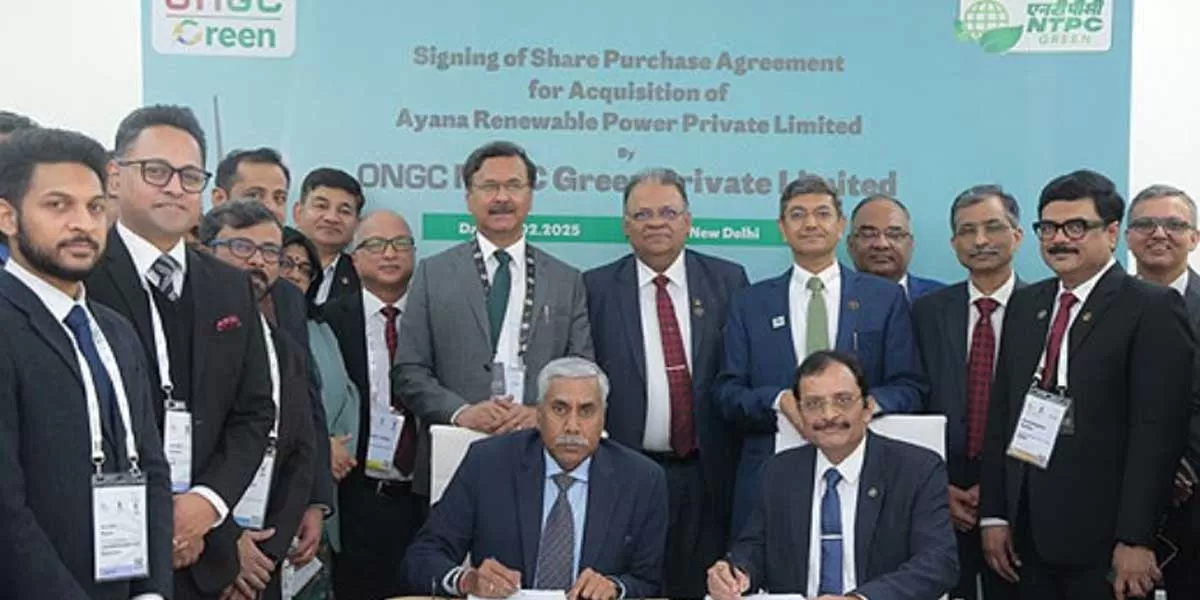Creative functionality is the mantra for ceiling and flooring design, with consumers demanding aesthetic products that are high on quality, eco-friendly, affordable, and easy to install and maintain.The Rs.300-million Indian flooring market has seen pivotal changes in innovation, technology and design in recent years. And gone are the days when ceilings made in concrete and wood were the go-tos!FloorsMarble flooring is still the mainstay for most residential apartments and homes. “However, the revival of terrazzo and in-situ flooring with geometric patterns is seeing a comeback,” says Shobhan Kothari, Architect-Partner, ADND Studio. Micro-concreting in flooring is also coming into vogue, with its seamless and minimalist look. Epoxy flooring is largely considered for industrial spaces. Wooden flooring in various shades and patterns has made a huge return to design spaces, rendering an instant warm look.Let’s take a look at the most trending floors:Marble: Commonly used instead of tiles and slabs, if you desire both luxury and timelessness. “An array of colour and patterns are available in marble. Being a premium material in looks, durability and pricing, it is best used in living rooms,” notes Shresht Kashyap, Co-Founder, KNS Architects. Tip: Avoid abrasives for cleaning; they leave scratch marks. Price: Rs.150 per sq ft onwards. Commonly used: Residential, hospitality, restaurants and commercial sectors.Sharing a developer’s perspective, Roohi Naveed, General Manager-Planning, Prestige Group, believes there is no limit to design with marble. “Available in various colours and natural grains, marble slabs can be book-matched or used for designer patterned flooring. You can have intricate inlay to accentuate the space or work it with different finishes, like leather and polished finish, to name a few.”Granite: A tough stone that can be cut and shaped into many designs and finishes, it is ideal for areas with high footfalls. “This flexibility makes it great for both indoor and outdoor use,” avers Kashyap. The material is differentiated owing to its finishes and crystal composition. Tip: For maintenance of granite, gentle cleaning is necessary, without pressures or corrosive chemicals, to prevent loss of brightness or staining. Commonly used: In hospitals and malls as an alternate to tile. Concrete in-situ: Stained concrete finishes are trending for their earthy yet classy finish, notes Naveed. Adds Kashyap, “In-situ concrete is poured, moulded and cured on site to customise the build, and is incredibly versatile. This flooring is used in residential and public buildings. It is non-absorbent in nature, durable, smooth, aesthetic and easy to maintain.”Tip: Floor finish should be divided into suitable panels to reduce the risk of cracking. Price: Ranges from Rs.250-350 per sq ft (labour + material).Commonly used: Residential and commercial, and factories. Limestone: Found in a variety of colours, from creams to charcoal, it compliments all kinds of décor – from traditional to contemporary. As Kashyap shares, “By nature, it is porous and soft, and can be treated for various textures.” Limestone commonly available in India includes Cuddapah, Kota and Jaisalmer stone. The radiant colours give a warm, welcoming vibe, and complements white walls, and accents of brown, blue and black. Price: Ranges from Rs.60-100 per sq ft (only material).Commonly used: A great choice for high traffic areas and outdoor spaces. Cuddapah and Jaisalmer stone are often used in residences, white Kota is perfect for factories. Besides these, Naveed believes patterned or printed tiles – black and white, Moroccan patterns, etc – can bring out the best from a given space. “These days, vinyl can also be seen in a variety of finishes and colours,” she adds.CeilingsCeilings are all about detailing and design. A regular gypsum ceiling can be made attractive when finishes are used thoughtfully. “Starting from wallpaper and texture paints to mirrors, acrylic mirrors, lacquered glass, hand painting and gold foiling, the surface can have a variety of textures and designs,” notes Naveed. CNC-cut metal designs and light installations can make any ceiling attractive. “For corporate spaces, where services and lighting are of utmost importance, grid ceiling, square cell ceilings and rafter ceilings would be a wise choice,” she suggests. Kothari observes that ceilings in most residential apartments are kept controlled and minimalist in approach, largely because of the lack of available height. In commercial and retail spaces, the concrete slab is exposed with open ducting and lighting. “This is done primarily from an aesthetic point of view as well as commercial viability and speed of deliverance to achieve it with the rent-free period.”Today, false ceilings have become a symbol of modernism and finesse. “Apart from aesthetics, they are bent upon serving various other functions,” says Amitesh Agrawal, Director-Marketing, India Gypsum. “Our pioneering product Minerotex ET 900+ Gypsum plaster has been doing extremely well in the interior wall plastering space, while our anti-microbial range of Minerotex Fibre ceiling tiles and Metamatic Metal ceiling range are gamechangers in the healthcare and hospitality space.”Let’s take a look at ceiling trends, as Kashyap highlights:Gypsum: Gypsum false ceilings are lightweight, sound-insulated, fire-resistant, soft and thermally insulated. They come in standard board sizes that can be cut to any shape and size, and are hung with the help of iron framework. Finishing work on these boards – paints, laminates, wallpaper and texture finish – looks good. Commonly used: Most commonly used material, especially in residential, hospitality and commercial spaces. Exposed concrete or concrete paint: The faux-industrial look is popular and concrete lends itself perfectly to this trend. The neutrality of the material ensures it works well with both modern and traditional styles. It can be applied in multiple ways, such as plain epoxy or texture paint. Cost-effective and easy to maintain, with low labour cost, it can be used almost anywhere, including industrial spaces. Tip: Spray-apply a primer and finish with a coating.Commonly used: Residential and commercial spaces. Acoustical spray: By treating the ceiling and walls with acoustic spray, sound is absorbed better, reducing reverberation and directly improving acoustics. Completely seamless and lightweight, it can be applied in any shape and form, in various thicknesses and colours, hence controlling acoustics without compromising on aesthetics. The degree of sound absorption depends on the thickness. Commonly used: Commercial and hospitality spaces.Stretch-lit ceiling: Lighting stretch ceiling uses a translucent sheet backlit by an external-led source of light. It is possible to play various light intensities as desired. Apart from a plain white sheet, printed, lacquered and textured sheets are also available. Suited for: Cinemas, commercial, retail and healthcare spaces. Metal ceiling: Although galvanised iron and aluminium are industrial-looking materials, they can be a visual treat when polished and used as a false ceiling. Metal ceilings are the most durable with easy installation, low maintenance and low labour cost. Commonly used: Commercial spaces, industries and, at times, residential spaces in the form of jaalis. Wooden or veneer: Wooden false ceilings are used because of their natural textures and patterns. They can be covered as decorative plank and huge veneer sheets can be used depending on the design. Being expensive, wooden false ceilings are not used in malls and hospitals but can be installed in residential buildings. They can be given various finishes or painted as desired.As per user demandConsumers are increasingly looking for materials that are eco-friendly, low maintenance and practical. “Cork flooring, bamboo flooring (naturally renewable), reclaimed wooden flooring, recycled glass tiles, etc, are attracting the attention of consumers and designers,” shares Naveed. “The market is now offering alternates for beautiful Terrazzo and wooden flooring in the form of porcelain tiles. These are user-friendly and easy to lay and maintain, without compromising on appearance.”Welspun Flooring has introduced an array of innovative solutions: Click N Lock tiles, which with their stone polymer composite can be laid on existing floors with minimal effort in less than a day and are waterproof, termite-proof, UV-resistant and scratch-resistant; Greens, artificial grass that is easy to maintain; Broadloom Carpets, wall-to-wall carpets that come in a nylon finish with sound insulation and are easy to maintain; and Carpet Tiles in a variety of printed designs and in the form of pre-sized nylon carpet tiles with integrated backing with tactile adhesives. “The customer today needs quality, functionality and long-term performance, all at competitive prices. Our products thrive on three key pillars: Convenience, performance and design,” says Mukesh Savlani, CEO,Welspun Flooring.Mirco-concreting, terrazzo slabs and geometric flooring are innovations flooding the market right now. Aesthetics vs. cost factor vs. time are interdependent factors that determine consumer selection. “Flooring durability is dependent on its wear-and-tear sustenance,” says Kothari. “For residential flooring, experimentation can be quite high. For commercial and retail spaces, where there is great footfall, the material needs to be hardy. For ceiling works, generally, the residential and hospitality sectors have a high need for innovation and creativity. This is limited in scope in the corporate sector.”Ceilings define the aesthetic appeal of a interior space. “The overall look of an internal ceiling can be modified using Gypmatic Gypsum False Ceiling,” says Agrawal. “Available in variable thickness and sizes, they can be cut into any desired shape and fixed below the main ceiling with the help of IGPL Gypmatic Serrature Metal Framework. Further, our Gypmatic Serrature AL series Metal Framework is the most technologically advanced framing system in the ceiling and partition space, besides our PEBLO range of patterned densified calcium silicate ceiling tiles. Along with enhancing elegance, these help reduce noise and are also extremely fire-resistant, strong, bio-safe and CII-IGBC Green Pro Certified.”While flooring helps convey 2D expanse, ceilings take this spatial aspect outward and upward in a 3D format. From a developer’s perspective, Amar Tendulkar, Chief of Design and Sustainability, Mahindra Lifespace Developers, shares: “Our projects are large scale, often more than a million sq ft in area. It is a challenge to ensure natural stone of the best quality and uniform granularity or texture in such huge quantities. We thus started evaluating factory-made products, which match the premium quality of imported marble and are tougher, more durable and non-porous. Thanks to digital printing technology, these are now widely available, both in ceramic and vitrified tiles. We use vitrified tiles even for bathrooms and exposed balconies as they are smooth, glossy and stronger, thus better able to withstand heavy traffic. These tiles are available in large sizes and are also virtually waterproof.” Further, Mahindra Lifespaces uses innovative technologies such as tile adhesives for tile fixing, which ensure reduced hollowness and water penetration, and are popular for their strength and adhesion. Importantly, they help conserve natural resources like river sand. “We have started applying specialised tile adhesive directly on concrete slabs, thus saving time and reducing leakage,” adds Tendulkar. “For ceilings, we use coarse putty (instead of conventional plaster) for better finish, thereby reducing the consumption of water, sand and cement. We are able to achieve a finish of 4 mm thickness by adopting the aluminium formwork concrete construction method.”Necessary features Ceilings and floorings in a project should ensure they are heatproof, leakproof, soundproof, dustproof, and fire-safe. Integration with MEP is important with dropped ceilings as most of these systems are by definition above the false ceiling. India Gypsum’s Gypmatic gypsum ceiling and drywall systems are non-load bearing and constructed using modern, dry-lining techniques. Features include ease of installation, fire-resistance, sound isolation, durability, economy and versatility.Welspun Flooring’s Click-N-Lock tiles come with waterproof, termite-proof, flame-resistant, stain-resistant and scratch-resistant features. While the Carpet Tiles offer sound insulation, fade-resistance and stain-resistance attributes, too, Greens have an inbuilt easy drainage system and are fire-retardant. Customers are also offered the option of combining hard and soft flooring to create a unique floor design, ensuring noise-free and dust-free installation.Green building codes recommend the use of over-deck insulation under roofs. “In areas where sensible heat loads are large, like data centres, under-deck is recommended to reduce the heat exchange,” says Prakasan TP, COO, MEP Business, Sterling and Wilson. “In typical factory installations, where the roof and walls are thin, metal sheet under deck insulation is applied after erection. The current trend is sandwich roof and wall panels filled with polyurethane foam or rockwool. To improve the efficiency of roof thermal insulation, over-deck insulation is recommended but involves a slightly complex set of steps to combine with roof waterproofing.” The first step involves a layer of polyurethane membrane or a bitumastic sheet raised 300 to 1,000 mm curved at the intersection of the floor and parapet walls, protected and drained by a non-woven geotextile. The insulation placed on this is further protected by puncture-resistant woven geotextiles, etc, and then covered with gravel or mortar. Rockwool is used as fire-rated insulation and the Nitrile rubber selected class-O for fire-resistant rubber insulation. Additionally, intumescent paint is used to meet the fireproofing requirement and special low noise plumbing and fitting.For leakproof ceilings and floors, Prestige Group usually opts for gypsum board ceiling for most interior works. “We suggest that areas more prone to leakages should have moisture-resistant gypsum board and advanced technologies such as nanotechnology-based waterproofing chemicals from Zydex to prevent water seepage in walls, roofs and more,” adds Naveed. “In exposed ceilings, we suggest an anti-fungal coat before the services and final finishes start.”Mahindra Lifespaces uses the latest SBR-based waterproofing system for bathrooms and polyurethane waterproofing system for terraces and podiums (as a replacement to older acrylic cementitious waterproofing) “to ensure damp-free homes for our customers,” as Tendulkar tells us. Fine-tuned, for the userFloorings and ceilings are of as much importance as walls and openings for maintaining the indoor micro climate.“Solutions for ambient and focus lighting can be considered an integral part of ceiling design and consciously proposed,” says Naveed. “Lighting and HVAC solutions can be integrated within a design as a feature. Also, one should always aim for a comfortable clear height.”To make flooring and ceiling offerings more attractive, architects and manufacturers can suggest and develop products that are more environment-friendly and cost-effective, avers Kashyap. At the same time, it is imperative to be conscious of the chemical and toxic levels of the materials and ensure they are health-friendly.Popular InnovationsShresht Kashyap, Co-Founder, KNS Architects, takes us through industry innovations to meet growing consumer needs.FlooringPolyester (PET) carpet: A sustainable carpet made of recycled plastic bottles, causing minimum environmental impact. Benefits include economy, durability, spill-resistance and availability in a variety of colours and patterns. However, if not repaired promptly, it can easily tear and be rough to walk on. Polished concrete: A sustainable material gaining popularity. Durable, easy to clean and never needing replacement, concrete is typically slab on grade and used as a subflooring in some residential settings. If polished and tinted to the homeowner’s taste, it does not need traditional flooring over it. From creating a tiled effect with different colours to inlaying other materials such as glass, the design possibilities are endless. Cork flooring: Usually seen on walls or in wine bottles, it is also a great material for floors. Harvested from the bark of the cork oak tree, it has anti-microbial properties, is fire-retardant, easy to maintain, and acts as a natural insect repellent. It can be finished in a variety of paints and stains and its durability allows for use in any part of a house. Terrazzo flooring: Often regarded as the first ‘green’ flooring for its economy and environment-friendliness, the sheer range of colours, designs and materials used in terrazzo is awe-inspiring. Being non-porous, today’s epoxy terrazzo is extremely easy to clean and maintain. It can be moulded into panels for custom staircases, backsplashes, countertops, etc. Ceiling Recycled ceiling tiles: Made from recycled beverage containers – a mixture of cardboard, plastic bottles and aluminium – the material has the same structural integrity as a gypsum board and can be cut and screwed into a framework, but with higher resistance to moisture.Felt ceiling: A few mm-thick skin ceiling material, which allows it to be applied in every space and on every surface, straight or curved, it is available in a range of colours and forms, such as rolls, panels, 3D forms. Its property of sound absorption improves acoustics. Mesh ceiling: Metal mesh ceilings are popular owing to their sustainability, functionality, flexibility and contemporary aesthetic. By varying the mesh pattern, specification and finish, myriad visual effects can be created. Ceiling mesh is opaque with a shiny natural metallic finish or matt powder coating. Even bespoke designs featuring concave or convex mesh ceiling panels can be accommodated. Additional benefits include fire-resistance and perforation allowing air flow.Contribution to Project CostWhile the cost of flooring and ceiling depends upon the design, for any given project, it ranges from 20-25 per cent of the project cost: Roohi Naveed, GM-Planning, Prestige Group.Depending upon the project, a typical flooring solution ranges from `400-500 per sq ft of the total building area: Prakasan TP, COO, MEP Business, Sterling and Wilson.The cost varies with project type and specifications. For residential projects with vitrified flooring, flooring costs range from `140-150 per sq ft; ceiling costs range from Rs.100-140 per sq ft: Amar Tendulkar, Chief of Design and Sustainability, Mahindra Lifespace Developers.Turnkey Solutions Prakasan TP, COO, MEP Business, Sterling and Wilson, highlights flooring and ceiling solutions offered as part of its MEP services.“Typically, MEP services in turnkey projects have false floors in data server rooms or such similar applications for IBMS works. There is either a 600-mm sunk or raised floor as designed by the architect, and MEP executes the frame and tiles for the false floor. Besides, MEP also executes wall insulation for noise reduction in plant and equipment rooms, diesel generator rooms and underdeck insulation. These are rockwool/glass-wool wall and roof insulations 50-75 mm thick, set in a 600-1,000 mm sq aluminium grid frame, further fastened with the help of aluminium or GI-perforated sheets with a lining of glass fibre tissue. Under-deck insulation is done similarly and includes new materials like Nitrile rubber (closed cell) up to 25-32 mm thick.”Current Challenges First, to convey the design intent to the consumer, which paves the way to choosing the material, is a challenge, observes Shresht Kashyap, Co-Founder, KNS Architects. “Second, the exposure to architects and consumers of the materials available in the market. Third, conveying the cost difference and the purpose of the difference.”For Mukesh Savlani, CEO, Welspun Flooring, “When it comes to conventional flooring in the current market scenario, installation and removal of an existing floor is highly time-consuming.” “The general perception is that false ceilings are only used for aesthetic purposes,” according to Amitesh Agrawal, Director-Marketing, India Gypsum. “Also, there in less awareness on the appropriate false ceilings and partition specifications and materials to be used.” - SERAPHINA D’SOUZATo share your views on current trends in Floorings and Ceilings in India, write in at Feedback@ConstructionWorld.in

















